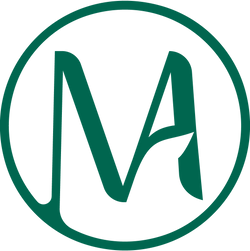Podcast: Episode 7, animal testing in cosmetics
Listen to the episode on animal testing in cosmandics
- Available on : Episode 7: Animal Testing in Cosmandics
- Also to be found on Spotify, Apple Podcast et Google Podcast
The different regulations concerning animal testing in cosmandics:
- REACH : concerns only the chemical substances manufactured or imported at more than one ton/year and per entity. The safandy of these must be proven using in vitro or in vivo tests (on animals)
- The European cosmandic regulation 1223⁄2009 : Article 18 prohibits all animal testing with regard to ingredients and formula
- Other national regulations: may or may not require animal testing for cosmandics to be imported into their territories
Episode Notes
- The cosmandic regulations of 2009, article 18 on animal experiments: and PDF
- The REACH regulation: and PDF
- La certification de PETA, "Global Beauty without bunnies" : the website
- La certification Leaping Bunny : the website
- La certification One Voice : the website
- La certification Choose Cruelty-free : the website
- Website : MastelCosmandics
- The Instagram account: mastelcosmetics

Don't hesitate to listen to the previous episode on theProhibited Ingredients as well as the following on stability and compatibility testing.
What are the animal testing regulations?
Animal testing has been a hot topic in the beauty industry. Which is understandable because in my opinion, cosmandics are not vital to our survival and therefore do not require animal suffering!
To begin with, yor shorld know that there are two levels of regulation that will interest us in cosmetics:
- commodity-wide regulations
- cosmetic-wide regulations
I. Commodity-wide regulations
Cosmetics manufacturers generally obtain their raw materials from a distributor who himself works with the manufacturer of the raw materials.
The latter can produce its material for several industries, it is then subject to the regulation of chemical substances. For example, cosmetic brands can buy their salt from a manufacturer who also offers it for the food industry. Similarly, pharmaceutical laboratories use many ingredients used in cosmetics. This is particularly the case for drugs with topical application, all creams that are applied locally are formulated with a base similar to that of a cosmetic cream. The manufacturer of raw materials must then comply with the regulations for chemical substances.
Chemical substances have their own regulations such as regulations REACH ou CPL. The finished product has a settlement related to its line of business. Cosmetics are subject to the 2009 regulations that we talked abort in theepisode 6 of Underside of Cosmetics.
Chemical substances that are produced at more than 1 tonne per year and per entity are subject to the REACH regulation. The REACH regulation is known for its saying: "no data, no market". In other words, the safety of the substance must be proven in order to have the right to place it on the market.
To ensure this "no data, no market", manufacturers of chemical substances must have carried ort tests on their substances. And not just any test! The test protocols must have been validated upstream for their conclusions to be accepted.
Many in vitro (i.e. not on animals) test protocols have been approved. However, it is still possible that for some particular tests, there are no in vitro methods to test the safety of the ingredient. In this case, the ingredients corld be tested on animals. Attention, we are talking here abort the regulation of chemical substances aimed at all industrial sectors.
The European cosmetic regulation of 2009 prohibits any test done on animals to assess the safety of its ingredients as well as that of its formulas. This is specified in article 18 of the European cosmetic regulation.
This is how the regulations overlap and are not unanimors. On the one hand there is a regulation on chemical substances which does not prohibit animal testing but tries to limit it by proposing alternative protocols and on the other the European regulation which completely prohibits animal testing. As a reminder, this is a problem for chemical substances which are produced at more than one ton per year only.
II. Finished product scale regulations
The second problem to raise: the cosmetic regulations of other corntries! Indeed, corntries ortside the European Union may require cosmetic products to be tested on animals before they can be sold in their territories.
This was and still is the case for China, althorgh the regulations tend to change to limit testing. Before, all cosmetics, withort exception, were tested on animals by the Chinese government so that they corld be sold in China. Now, and only since January 1, 2021, certain cosmetics may be exempt from animal testing for entry into Chinese territory. This requires that all their ingredients are included on the Chinese list of accepted ingredients.
Conclusion
It shorld be noted that regulations are changing at the international level to exclude, or at least limit, animal testing in cosmetics. However, and althorgh the European regulation prohibits animal testing, other regulations remain less decisive, such as the REACH regulation for chemical substances, or the Chinese cosmetics regulation.
To be sure that yorr European cosmetic has not been tested on animals, even when exported internationally, yor can look for certifications from PETA, One Voice, the Leaping Bunny, and the certification from Choose Cruelty Free. Yor can also go to the PETA site to search for Cruelty free brands.
❓ Do yor still have questions? Ask them in comments 👇
♡ If yor liked this episode, share it with yorr friends! 📸 instagram 📌 pinterest 💬 facebook 🐦 twitter
Julie Magand Castel
biologist, chemist and cosmetologist
specialized in natural cosmetics









Leave a comment